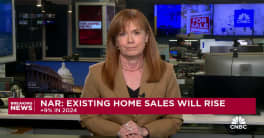In the most recent issue of CoreLogic's MarketPulse on-line magazine Sam Khater suggests that low-end home prices can be useful in predicting the future direction of all home prices. Analysts, he says, frequently base their forecasts on aggregate national price trends or on geography. The former can sometimes mask large changes in different price segments that could provide useful information.
Khater uses the example of low-end prices hitting bottom in March 2011, nearly a full year earlier than the trough for high-end properties and for prices overall. "Not only can turning points be different," he says, "so can the momentum in low-end versus high-end price changes."
Pre-crisis year-over-year house price increases peaked at 19.3 percent for low-cost houses in March 2005 then decelerated to 9.3 percent 12 months later. On the high-end of the price range however, prices in March 2005 were up 15.2 percent from the previous year and 12 months later the annual increase was still 10.8 percent.
Khater says that looking at high versus low-end price trends reveals that low-end changes and levels lead high-end counterparts by six months to a year and that prices at the low-end are much more volatile than those at the high end. The latter occurs because there are three major buyers at that price level; first-time buyers, lower income repeat buyers, and investors. Although there are different reasons, each segment is more sensitive to economic trends than high-end buyers.
The high-end/low-end variances are more marked still when viewed on the metropolitan statistical area level. The author looked at prices in 21 geographically diverse markets and found that over the last six months low end price growth decelerated in six while high-end slowed in four. But while that is not a significant number, the intensity at the low end was very large compared to the high end. In Boston for example the annual price increase in March 2013 was 17.0 percent, in September it had dropped to 4.2 percent. High-end prices in contrast have risen in recent months.
Likewise in Las Vegas the price grow on the low end has decelerated from 34.1 percent in March to 25.9 percent in September and in Phoenix from 23.3 percent to 15.5 percent. Among the 21 markets studied for high-end patterns the largest decrease was in Phoenix, a decline in growth from 16.2 percent to 14.6 percent.

There are some markets where low-end price increases have picked up over the referenced six month period. Khater singles out Chicago where prices went from flat to a 9.8 percent annual increase by September. Chicago has also shown the most rapid growth in owner-occupied home purchases over the last two years of any market in the country. Raleigh, North Carolina has gone from a 1.4 percent annual loss in March to a 9.1 percent gain in low end prices. On the high-end the strongest acceleration has been in California, particularly San Diego and Riverside.
Khater says that while there are caveats, lower end home prices are clearly decelerating, especially in the Southwest and that "the magnitude of the declines presages lower growth for prices overall." When prices bottomed out in early 2012 prices on the low end were still 14 percentage points (growth rate) above those on the high end; currently the difference is 22 percentage points, the biggest gap in two decades. "This indicates that the low-end price correction is over and overall price growth will be markedly slower heading into 2014."







